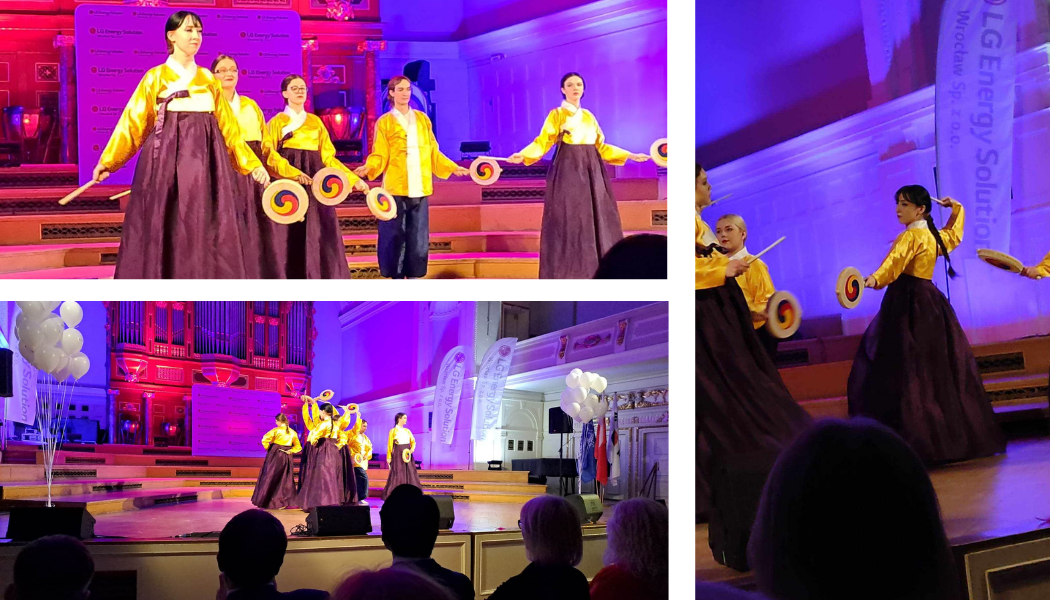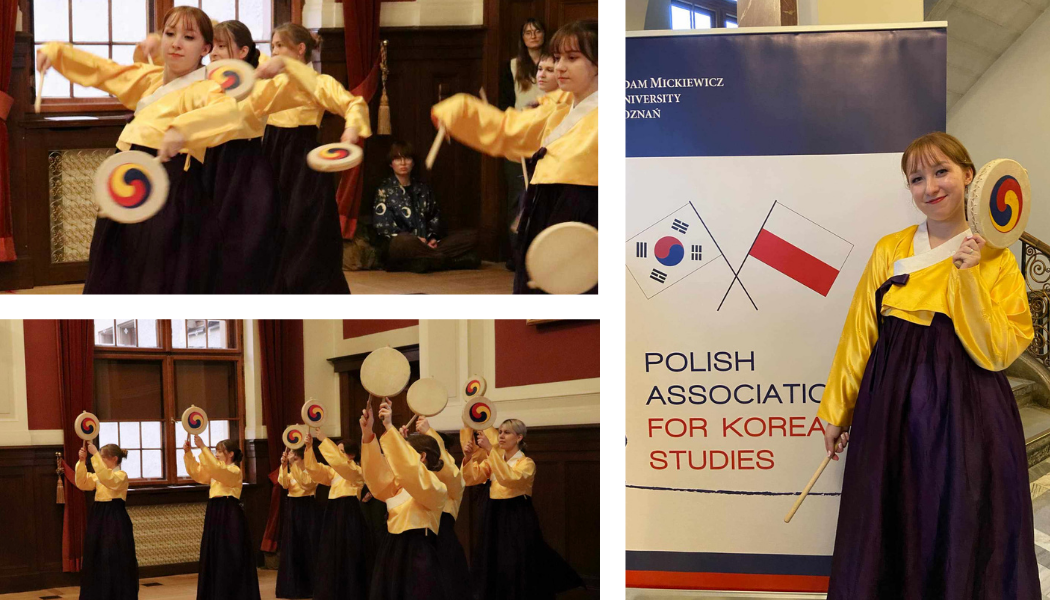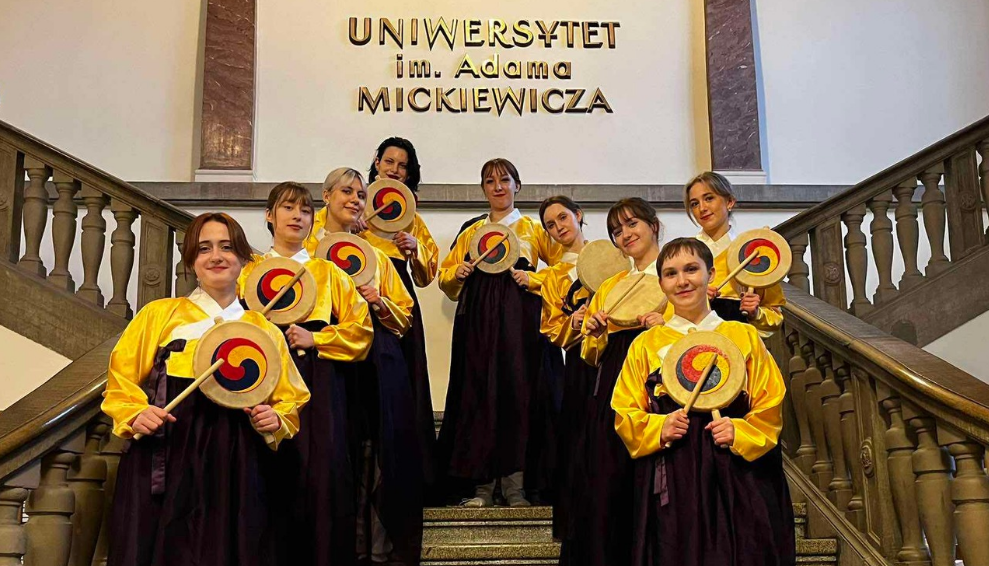- 한국어
- English
- 日本語
- 中文
- العربية
- Español
- Français
- Deutsch
- Pусский
- Tiếng Việt
- Indonesian
By Honorary Reporter Dominika Jankowska from Poland
Photos = Karolina Michalak
The traditional folk dance sogochum, also known as sogo nori, is typically performed with the small handheld drum sogo. The dancers create rhythmic patterns with the drum and their movements.
In a Jan. 27 interview, Karolina Michalak, the leader of the Tongmuyong Team, the only sogochum troupe in Poland, explains why she formed the group and her interest in traditional Korean dance.
Briefly introduce yourself and your group.
My name is Karolina Michalak, a junior Korean philology major at Adam Mickiewicz University in Poznan, Poland. I also lead the school's sogo troupe Tongmuyong Team. We have 10 active members who are or were all Korean philology majors.

The key element of sogochum is use of the small traditional drum.
How did you get interested in sogochum and form the dance team?
My journey with sogochum started in 2022, when my professor encouraged the class to revive the sogochum team that she had been a member of while a student at our university. At that time, I was on the buchaechum (fan dance) team but found sogochum intriguing.
We formed a group for this dance with guidance from our professor. It was initially challenging but I improved through practice. After returning to school after taking a gap year before my junior year, I found that the sogochum team had basically disappeared; all the members graduated without recruiting new ones. So when I learned that professors were looking for a sogochum representative for upcoming events, I decided to revive the team.
What is the key element of sogochum and how does it compare to other dances?
The key element of sogochum is the sogo. Our performances focus primarily on playing the instrument while dancing. This folk dance typically starts with calm movements and gradually builds up to lively and dynamic sequences. The dance's vigorous moves represent scenes of combat and hunting that merge with delicate and calm moves inspired by everyday life.
Compared to other dances like buchaechum, sogochum stands out for its energetic and playful nature. The dance has expressive movements including running and jumping while maintaining the drum's rhythm.
What about teamwork in your performances and ensuring group cohesion?
Sogochum is performed in a group, so teamwork is very important. We focus on all details to ensure the best synchronization with our moves and rhythm when beating our drums. Playing our instrument together is crucial in our dance, because if even one person makes a mistake, it can ruin the overall rhythm and sound of our performance.
We reinforce teamwork through consistent and regular practice, communication and encouragement. I consider playfulness and excitement and the general cheerfulness of being a team member important to us, even when we're not on stage. Building friendships also helps us create a positive and enjoyable environment.

The Tongmuyong Team (left) performs at an event celebrating Han Kang's Nobel Prize win and Karolina Michalak (right) poses with a sogo drum.
Describe the event you held this year to mark author Han Kang's Nobel Prize win.
We had limited time to practice, but all members showed great enthusiasm and determination to prepare for the performance. I was extremely proud seeing the team clad in Hanbok (traditional clothing), getting nervous before the performance and practicing till the last minute before showtime. I felt that I made my teammates fall in love with sogochum and was greatly touched by their passion.

The Tongmuyong Team poses for a group photo.
What is the best thing about leading the team and what keeps you motivated?
Seeing our members' passion and love for sogochum grow is the best thing. Sogochum gave me so much joy when I started it in 2022, and I'm so happy to see the joy members get from it, too. Their passion and dedication shows that reviving the team was the right decision.
msjeon22@korea.kr
*This article is written by a Korea.net Honorary Reporter. Our group of Honorary Reporters are from all around the world, and they share with Korea.net their love and passion for all things Korean.